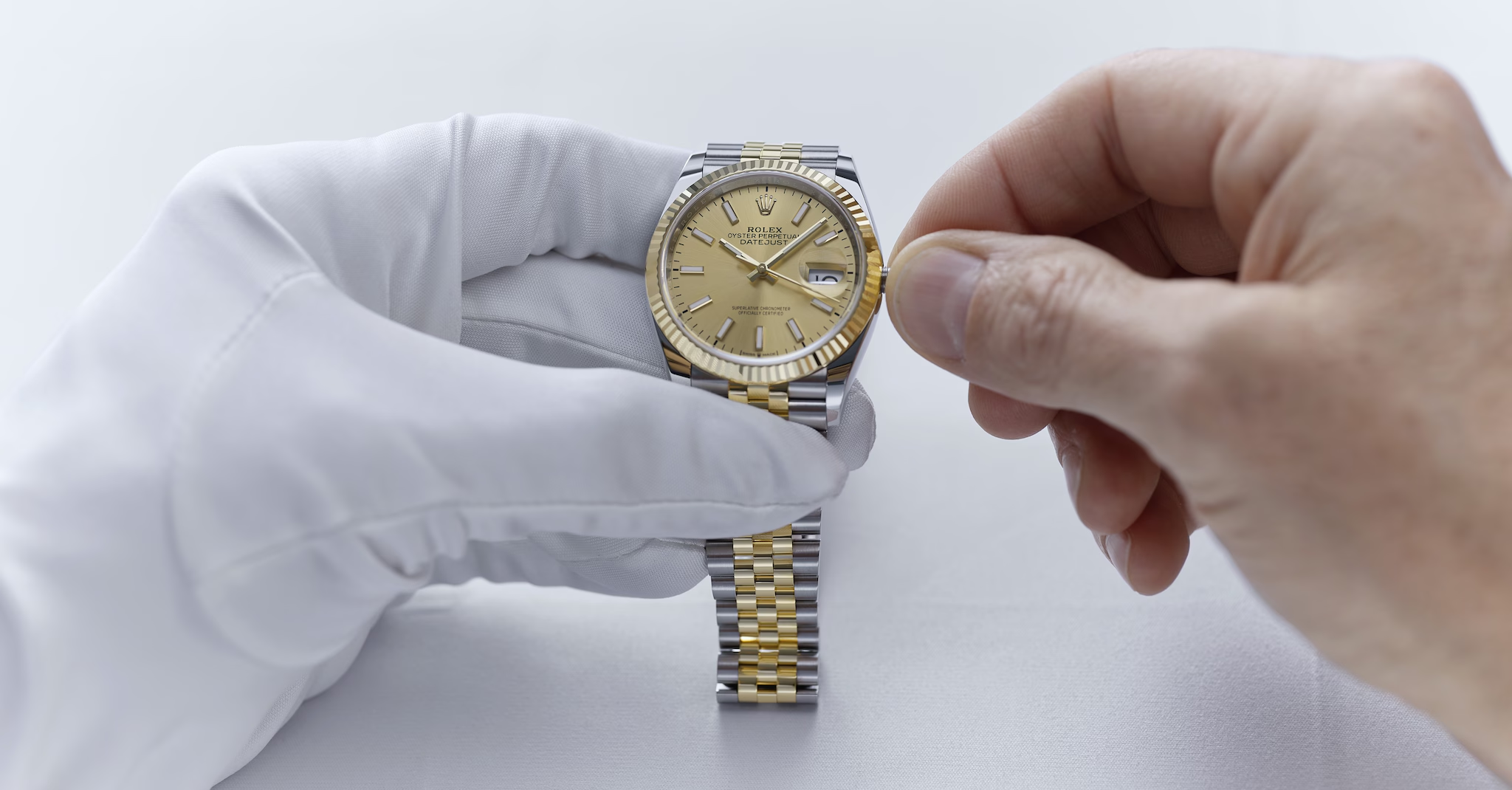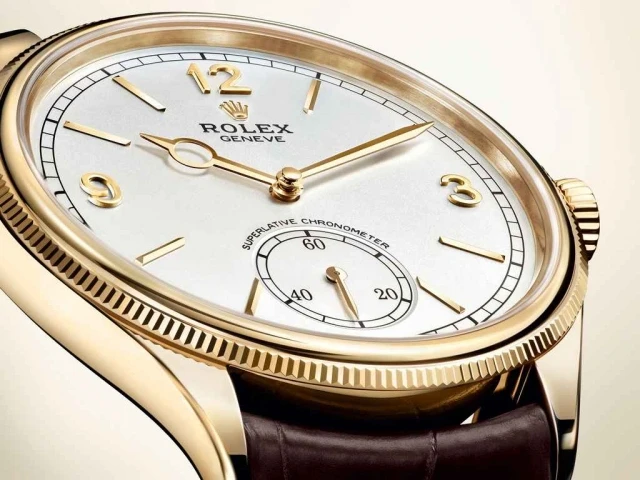Introduction
Rolex, synonymous with precision, luxury, and craftsmanship, produces some of the finest timepieces in the world. Each Rolex watch represents a commitment to quality that spans over a century of watchmaking excellence. Whether you’re a first-time Rolex owner or a seasoned collector, understanding how to maintain and care for your timepiece is critical to ensuring it remains in optimal condition for years to come.
In this detailed guide, we will explore all facets of Rolex watch maintenance, including cleaning, servicing, handling, storage, and troubleshooting. By following these practices, you can ensure your Rolex watch not only retains its beauty but also continues to function at peak performance. Whether you own an iconic Rolex Submariner, Datejust, or a more sophisticated Daytona, this guide will equip you with the knowledge to maintain your watch properly.
Chapter 1: Understanding Your Rolex Watch
Before diving into the specifics of maintenance, it’s essential to understand the construction of a Rolex watch. The craftsmanship that goes into every Rolex involves a variety of components, each requiring attention.
1.1 The Components of a Rolex Watch
- The Movement (Caliber): The movement is the heart of any Rolex. It powers the hands, date, and other functions of the watch. Rolex exclusively produces mechanical (automatic) movements, which are powered by the movement of the wearer’s wrist.
- The Case: Rolex cases are crafted from high-quality materials such as stainless steel, 18k gold, and platinum. These cases are designed to protect the internal movement from environmental factors, but even the finest materials require proper care to retain their luster.
- The Crystal: Most Rolex watches use scratch-resistant sapphire crystal. While resistant to damage, it’s essential to clean it properly and avoid harsh impacts that can result in scratches or cracks.
- The Bracelet: The bracelet, whether made of Oystersteel (stainless steel), 18k gold, or platinum, is a vital part of Rolex’s functionality and aesthetics. Over time, the bracelet can develop wear and tear, making it essential to keep it in good condition.
- The Crown and Seals: Rolex’s crowns are engineered to seal the watch, ensuring water resistance. Regular checks and proper handling of the crown are vital to maintaining the water-resistant capabilities of your Rolex.
1.2 The Importance of Proper Maintenance
Regular maintenance isn’t just about aesthetics; it ensures your Rolex keeps time accurately and functions flawlessly. Even though Rolex watches are known for their durability and robust design, a lack of attention over time can cause performance issues. Routine care, cleaning, and professional servicing keep the watch running smoothly and maintain its value.
Chapter 2: Basic Daily Maintenance and Cleaning
Caring for your Rolex on a daily basis involves several simple yet crucial tasks. These actions will help preserve the aesthetic appeal of the watch and protect its internal mechanics.
2.1 Cleaning the Exterior
Rolex watches are built to last, but their finish can become worn or dirty without proper cleaning. Regular cleaning is essential, especially if you wear your Rolex every day or in challenging conditions.
- The Case and Bracelet: Use a soft, lint-free cloth to wipe the case and bracelet after daily wear. A microfiber cloth works wonders for removing fingerprints and dust.
- Deep Cleaning the Bracelet: If your Rolex bracelet is particularly dirty or greasy (especially from wearing it while cooking or in a dusty environment), it’s a good idea to clean it thoroughly. You can use a soft brush (like a toothbrush) and a solution of mild soap and warm water. Gently scrub the bracelet, rinse it under warm water, and dry it with a clean towel.
- Cleaning the Crystal: The sapphire crystal can attract fingerprints and smudges. Use a microfiber cloth or lens cloth to clean it. Avoid using harsh chemicals or abrasives, as these can scratch the surface.
2.2 Checking the Crown and Seals
One of the most crucial components for maintaining your Rolex’s water resistance is the crown. Ensuring that the crown is securely screwed down is important to maintain the seal.
- Ensure the Crown Is Tight: When you’re setting the time or date, make sure that the crown is securely screwed back into place afterward. This simple step ensures the watch’s resistance to water and dust.
- Inspect the Gaskets: Rolex watches come with internal gaskets that ensure the crown’s water resistance. Over time, these gaskets may degrade or wear out, so it’s essential to inspect them occasionally.
2.3 Winding Your Rolex
Rolex watches feature automatic movements, meaning they’re powered by the motion of the wearer’s wrist. However, if you don’t wear your Rolex regularly, it may stop running.
- Manual Winding: If you haven’t worn your Rolex for a while, wind it manually by turning the crown clockwise. Do this about 30-40 times to ensure it is fully wound and ready to run. Be careful not to over-wind, as Rolex movements are designed to stop winding automatically once they’re fully wound.
2.4 Storing Your Rolex When Not in Use
Proper storage of your Rolex when you’re not wearing it ensures its longevity. Store your watch in a cool, dry place to avoid moisture buildup or extreme temperature fluctuations. Avoid placing the watch near magnets or electronics, as they can interfere with the movement.
- Use a Watch Winder: If you have multiple Rolex watches or don’t wear your Rolex daily, consider using a watch winder. A watch winder keeps the movement running by gently rotating the watch, ensuring it remains wound.

Chapter 3: Professional Servicing and When to Service Your Rolex
While daily maintenance is essential, professional servicing is an important part of Rolex ownership. Rolex recommends that you service your watch every 5-10 years, depending on usage.
3.1 Why Professional Servicing is Essential
Professional servicing ensures that your Rolex’s movement is kept in top condition. During a service, a Rolex technician will clean and lubricate the movement, replace any worn parts, and check the accuracy and water resistance of the watch.
- Lubrication: The lubricants used in the movement break down over time, which can cause friction and wear on the movement’s parts. During a service, the technician will apply fresh lubricants to the key components.
- Replacement of Worn Parts: Over time, small parts of the movement may wear out. Rolex technicians will replace worn parts with genuine Rolex components, ensuring the watch remains accurate and reliable.
- Accuracy and Water Resistance Check: The watch is checked for timekeeping accuracy and tested for water resistance. Any seals or gaskets that have deteriorated are replaced.
3.2 What Happens During a Professional Service?
When you send your Rolex to a certified service center, the technician will:
- Disassemble the Watch: The watch is carefully taken apart to examine the movement and its parts.
- Clean the Movement: The components are cleaned using special machinery to remove dust, dirt, and oils that have built up.
- Replace Worn Components: Any worn or damaged parts are replaced with genuine Rolex parts.
- Reassemble and Lubricate: The watch is reassembled, and fresh lubrication is applied to ensure the movement operates smoothly.
- Testing: The watch is tested for accuracy, water resistance, and overall functionality. This ensures the watch is in perfect working condition before it’s returned to you.
3.3 How Often Should You Service Your Rolex?
Rolex generally recommends servicing your watch every 5-10 years, depending on the model and how frequently it’s worn. Some models, such as the Submariner or Daytona, may need servicing more frequently due to their use in harsh conditions.
If you notice that your Rolex is running fast or slow, or if the crown doesn’t screw down properly, it’s a good idea to schedule a service.
Chapter 4: Caring for Your Rolex Bracelet and Clasp
The bracelet and clasp of your Rolex are integral to the comfort and functionality of the watch. Proper care of these parts ensures that your Rolex remains secure and looks great for years to come.
4.1 Cleaning the Bracelet
The bracelet is often subjected to oils, dirt, and sweat from the skin. Regular cleaning will keep it looking polished and new.
- Use a Soft Brush: For a deeper clean, use a soft brush, such as a toothbrush, to scrub the bracelet. Use a mild soap solution and warm water.
- Rinse and Dry: After cleaning, rinse the bracelet under running water to remove soap residue. Dry it carefully with a soft towel.
4.2 Adjusting the Bracelet
Rolex bracelets have an adjustable clasp to allow for a custom fit. Over time, you may need to add or remove links to accommodate changes in wrist size.
- Adding or Removing Links: If you need to adjust the size, it’s best to take your watch to an authorized Rolex dealer or watchmaker. They have the tools and expertise to add or remove links without damaging the bracelet.
4.3 Lubricating the Clasp
The clasp on a Rolex bracelet is a crucial part of the watch’s functionality. Over time, it can become stiff or worn. Periodically, it’s a good idea to lubricate the clasp





































